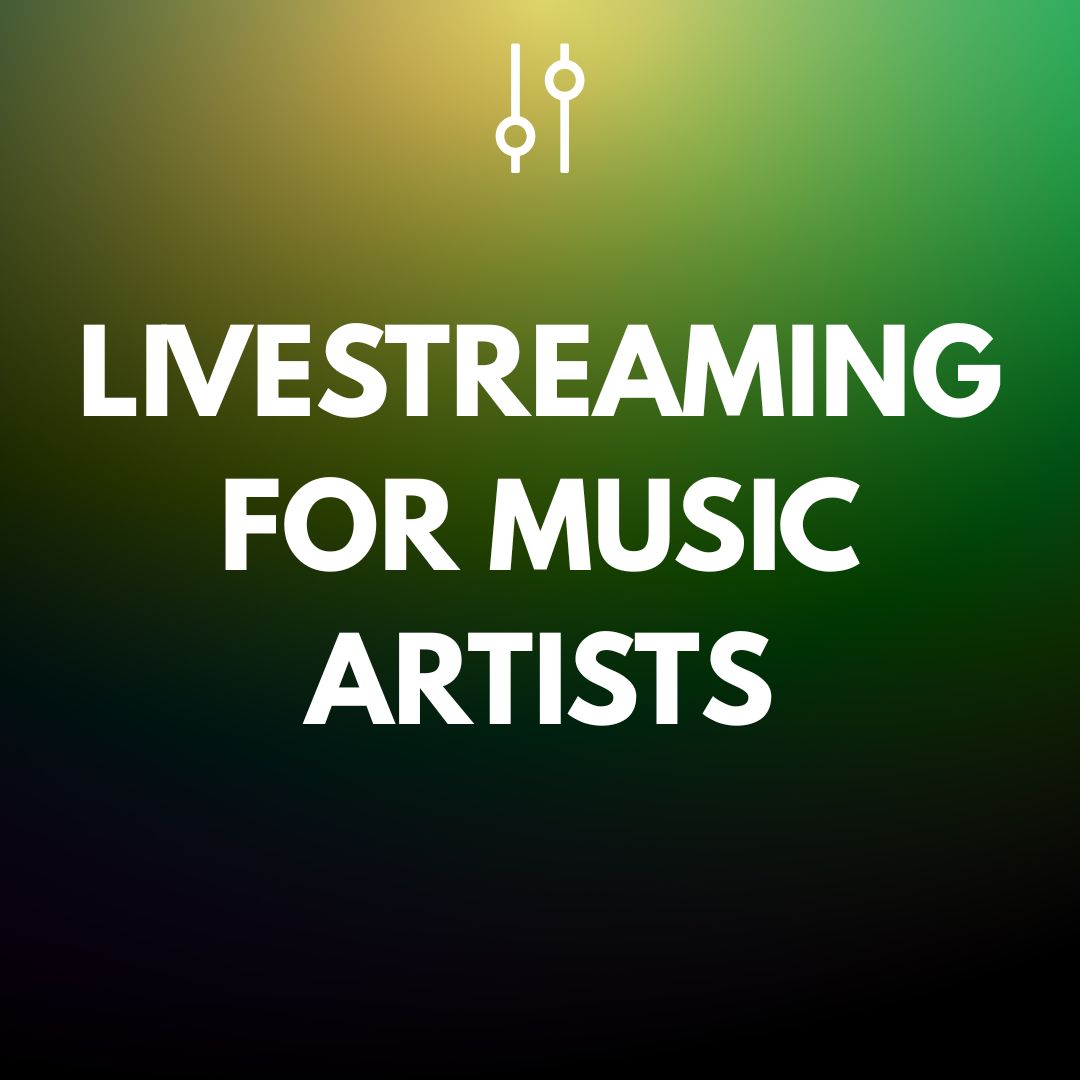Livestreaming for Music Artists: Elevate Your Reach



.webp)
.webp)
The music industry has transformed significantly in recent years, with technology reshaping how artists connect with fans. At the heart of this transformation is livestreaming—a tool that gives musicians a virtual stage to reach audiences across the globe. More than just a temporary pivot during the pandemic, livestreaming has become a dynamic, interactive, and essential part of how music is experienced today.
Why Livestreaming Matters
Livestreaming removes the limitations of geography, allowing artists to perform for global audiences without leaving their homes or studios. Fans from different continents can join in real time, fostering a sense of community and shared experience that transcends borders. This expansive reach builds visibility, diversifies fanbases, and opens doors to international collaborations.
Moreover, the cost-efficiency of livestreaming empowers independent and emerging artists to showcase their talent without the burden of touring expenses. It’s a democratizing force in the industry—leveling the playing field and allowing more voices to be heard.
Real-Time Connection with Fans
One of livestreaming's greatest strengths is its interactivity. Unlike pre-recorded content, live performances allow artists to respond to fans in real time—taking requests, answering questions, and sharing spontaneous moments. This two-way engagement fosters loyalty and creates memorable, emotionally resonant experiences.
Unexpected guest appearances, impromptu jams, and real-time shoutouts can all contribute to making fans feel included in something truly special. These moments transform casual listeners into lifelong supporters.
Cost-Effective & Scalable
Traditional concerts come with high overhead—venue fees, travel, staffing, and more. Livestreaming, in contrast, offers a low-cost setup with high impact. Artists can perform from home with basic audio/video equipment, allocating saved resources toward music production, promotion, or other creative pursuits.
This accessibility is especially beneficial for newer artists who are still building their audiences. Livestreaming allows them to scale up gradually and sustainably.
Choosing the Right Platform
Each livestreaming platform offers unique features and caters to different audiences. Here are some top options for musicians:
YouTube Live
With its massive reach and integrated monetization tools (ads, Super Chat, channel memberships), YouTube Live is ideal for building a broad audience. Artists also benefit from Google’s SEO capabilities and detailed analytics to fine-tune their approach.
Twitch
Once gaming-centric, Twitch has become a haven for creative content. It encourages community building through chat interactions, subscriptions, and collaborations. The platform thrives on engagement, making it a favorite for cultivating loyal followings.
Facebook Live
Perfect for reaching existing fanbases, Facebook Live integrates seamlessly with Facebook’s social features, event tools, and ad targeting. Artists can promote streams across their network and even cross-post with Instagram and WhatsApp.
Instagram Live
Great for informal, visual-driven connections, Instagram Live appeals to younger audiences and prioritizes authenticity. Integration with Stories and interactive features like polls create a personal, engaging experience.
Zoom (and similar tools)
For intimate, exclusive events like private concerts or Q&As, Zoom provides a direct connection. Its features—like breakout rooms and screen sharing—are ideal for workshops, meet-and-greets, or special fan experiences.
Best Practices for Livestreaming
To ensure your livestream hits the right notes, consider these tips:
1. Promote Strategically
Announce your stream well in advance. Use countdowns, sneak peeks, newsletters, and social media posts to build hype. Partnering with influencers or fellow artists can also help expand your reach.
2. Prioritize Quality
Invest in a quality microphone, camera, and lighting. A polished production enhances the viewer experience and reflects your professionalism. Always run a test beforehand to avoid technical issues.
3. Engage with Your Audience
Encourage participation through shoutouts, Q&As, song requests, and using viewers' names. Add interactivity through live polls or fun challenges to keep fans engaged.
4. Offer Exclusive Content
Debut new songs, share behind-the-scenes stories, or offer merch discounts during the stream. These touches create excitement and reward fan loyalty.
5. Analyze and Improve
After each livestream, review analytics like viewer retention, comments, and engagement. Use feedback to refine your future streams and tailor your content to audience preferences.
Monetizing Livestreams
Livestreaming isn’t just a fan engagement tool—it’s also a revenue opportunity:
Direct Donations
Platforms like Twitch and YouTube allow fans to support you with tips or donations during streams. Personal thank-yous or shoutouts can incentivize contributions.
Subscription Models
Services like Patreon let fans support you on a recurring basis in exchange for exclusive content and perks, building a sustainable income stream.
Merchandise Sales
Promote your merch during the stream—T-shirts, digital downloads, posters, etc. Consider exclusive or limited-time items to drive sales.
Ticketed Events
Use platforms like Zoom to host private concerts with ticket sales. Bundle tickets with added perks like meet-and-greets or unreleased content to increase value.
Sponsorships
Collaborate with brands that align with your music and values. Sponsored streams or product integrations can offer a valuable source of income and cross-promotion.
Final Thoughts
Livestreaming is no longer just a workaround—it's a cornerstone of the modern music career. It empowers artists to connect with fans on a global scale, build intimate relationships, and generate income—all from a single screen.
Whether you're an emerging artist or an established act, embracing livestreaming can take your music farther than ever before. Let your performances transcend borders, and bring your art directly into the hearts and homes of fans around the world.
Happy streaming!
.webp)

.svg)

.webp)
